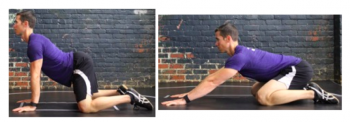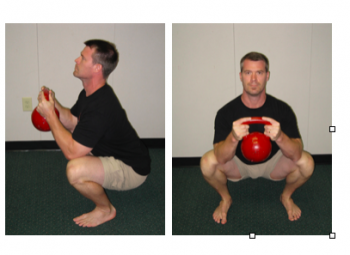Why The Squat? (A Path To Restoration.)
Nov 18, 2015

One of the tell-tale signs of having lost your reflexive strength - and therefore your resilience, is your inability to do a comfortable bodyweight squat.
Yes, a flatfooted, butt-on-ankles, real-deal honest-to-goodness squat.
Like you used to do for what seems to be hours on end.
[caption id="attachment_5499" align="alignleft" width="350"] My kids. They sit down in the squat for what seems like hours on end.[/caption]
My kids. They sit down in the squat for what seems like hours on end.[/caption]
The squat is simply a fundamental movement pattern.
You’re supposed to have it and you’re supposed to keep it.
What’s interesting is we see that many people in Westernized countries have lost it. While non-western cultures maintain theres. And, unfortunately, as they “develop” and become more like us (fat and weak?), they lose their ability to squat.
That should tell us that there’s something inherently bad (oops - I can’t say the word “bad” - that sounds “judgmental.”) - ahem - not good - about our culture.
Regaining your squat is a worthy pursuit, primarily because you were never meant to lose it. And losing it is really like having it stolen from you. Our lifestyle is robbing us of our design.
So enough philosophizing - if you want to regain what you’re supposed to have, here’s a pretty simple approach that will probably help you.
(Coincidentally, as you restore your squat, you’ll probably notice that you’ll decrease your aches and issues and maybe even drop a couple of pounds as you move your body into ranges of motion it hasn’t been in awhile and it starts functioning optimally.)
1. Rocking, feet plantarflexed

2. Rocking, feet dorsiflexed - just like above, but pull your toes under you (like in the picture below).
3. Elevated Rocking

4. Doorway Squat - straddle an open door holding on to the doorknob. Squat down.
5. Goblet Squat - see the picture below.

6. Bodyweight Squat

This is just a general path. It will work for many, and not for some.
You may have to stop at a “scenic overlook” and do some other RESETs or RESET regressions along the way. That’s ok. I just wanted to give you a general path to follow to get you back to fully functional again.
How long will this take you might be wondering?
As long as it takes.
The goal is to be both persistent and consistent.
Do this until you restore your squat.
I think you’ll find that the process as well as the outcome, will be rewarding.
Comments (0)
Please login to comment.